What Are The Differences Between Drywood & Subterranean Termites?
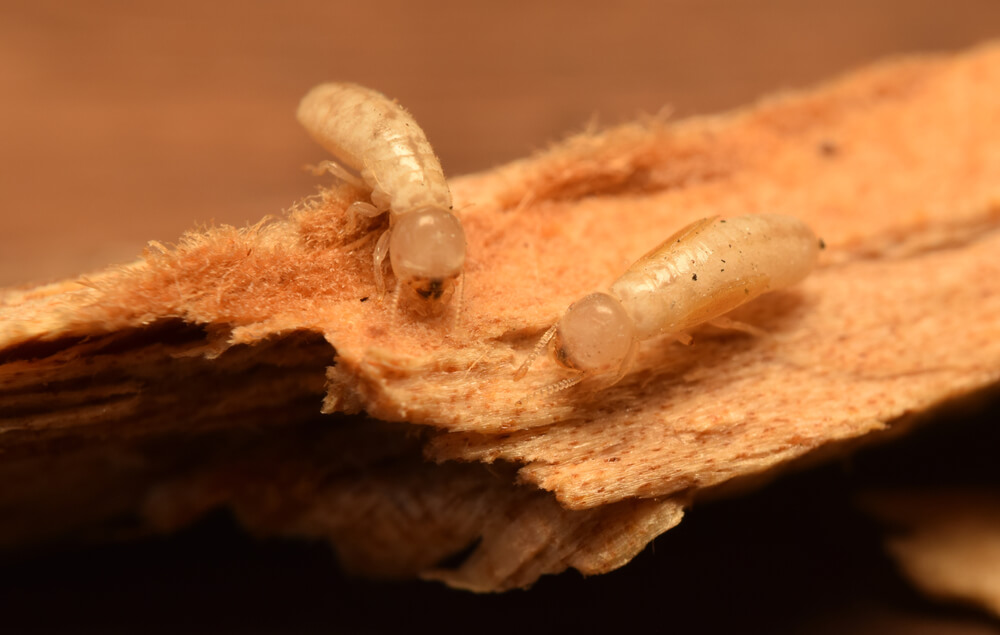
While many insects are mostly harmless and are usually only disliked by humans because of fears or annoyances, termites present some serious problems for property owners. Termites will destroy wooden structures and can lead to serious property damage if left unchecked. In the United States, there are two main categories of termites: drywood termites and subterranean termites. In this article, we will discuss some of the differences between these two types of termites and what it means for you! If you are a home or business owner in Massachusetts or Southern New Hampshire that is currently struggling with a termite problem, contact our team at Absolut Pest Control today for a free termite control estimate!
Drywood vs. Subterranean Termites
One of the primary differences between drywood and subterranean termites is that drywood termites nest in the wood they are eating away at, while subterranean termites live underground. Subterranean termites typically enter homes and buildings through “mud tubes”, which are pencil-sized tunnels of mud that stretch vertically from the ground to the wood on a house or building.
What Type Of Termite Causes More Damage?
Subterranean termites typically have the ability to cause more damage than drywood termites, partially due to the fact that their colony sizes are much larger. Subterranean termites can also damage properties faster due to their colony sizes, sometimes causing significant damage to houses and buildings before the infestation is even noticed.
How Do You Get Rid Of Termites?
There are multiple different treatment methods for drywood and subterranean termites. For drywood termites, the most common treatment methods include fumigation, insecticides, heat treatment, and spot wood treatment, which involves injecting specific chemicals into the wood where drywood termites are living. For subterranean termites, the two most common treatment methods are liquid soil treatment and bait stations. Liquid soil treatments involve putting a barrier of termiticide around the perimeter of the house or building, and bait stations involve putting out poison bait for the termites that will be spread throughout the colony.
Contact Absolut Pest Control For Termite Control Services in Massachusetts!
If you need assistance identifying, preventing, or treating a termite infestation in your Massachusetts or Southern New Hampshire home, please contact our team at Absolut Pest Control today for a free termite inspection and control estimate! We provide various pest removal and extermination services at affordable prices throughout the region! Give us a call today at (978) 388-4589 or fill out the contact form on our website to get a free estimate!
Carpenter Ants: Identification, Prevention, & Control
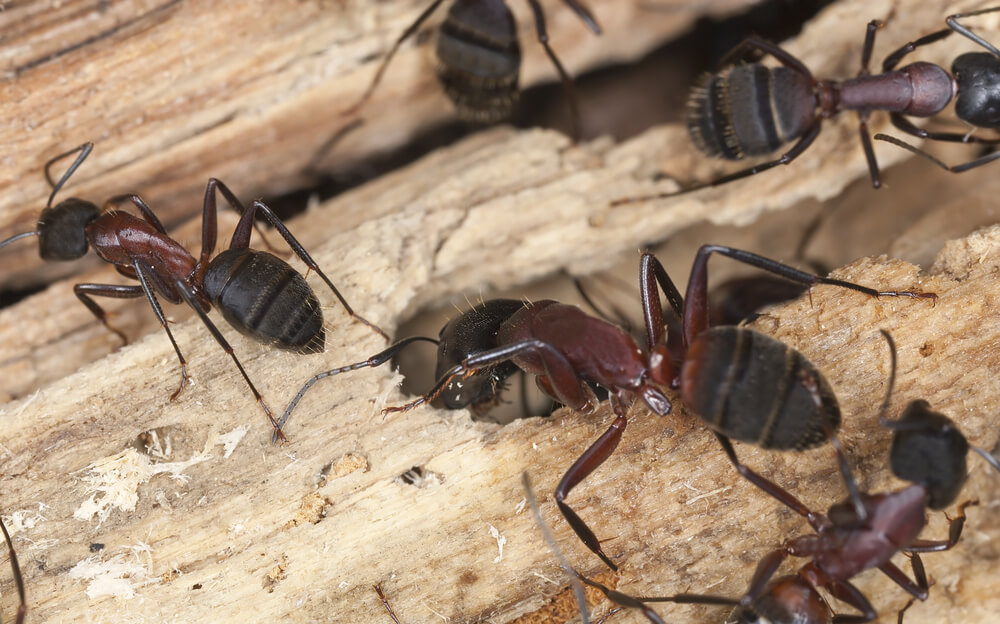
Most people know about the dangers of termites and how they can cause significant damage to the wooden structures in a home, but there is another wood-damaging insect that you should be keeping your eye out for: carpenter ants! While carpenter ants are typically not quite as destructive as termites, they can still cause thousands of dollars in damages when they infest your home and tunnel through wooden doors, window frames, porches, joists, beams, and more. In this article, we’ll offer some tips on how you can identify, prevent, and control carpenter ant infestations! If you have any questions about carpenter ants or are a Massachusetts homeowner that would like a free estimate on a carpenter ant control service, please contact our team at Absolut Pest Control today by calling us at (978) 388-4589!
Carpenter Ant Identification
Spotting a carpenter ant isn’t too tough if you know what to look for. Carpenter ants tend to be larger than common black ants, usually measuring ½” to ⅝” long. Color-wise, they can range from jet black to a dark brownish red. What sets them apart from other ants, physically, are their smooth, rounded backs, which is unlike other ants that tend to have a more uneven silhouette.
If you notice a fine, sawdust-like material near wooden structures in your home, it can be a telltale sign of a carpenter ant infestation. They leave behind this debris, known as frass, as they tunnel through wood. If you’re noticing any signs of carpenter ants in your home, it’s important to contact a pest control professional as soon as possible!
Causes & Risks Of Carpenter Ant Infestations
Carpenter ants don’t need an invitation to enter your home. They work their way in through cracks and crevices around windows, doors, and electrical holes. These small insects also have an uncanny ability to crawl along tree limbs, shrubs, and even overhead wires, quickly making their way into your home. Some of the most common causes of carpenter ant infestations include:
- Moisture Problems: Areas with persistent moisture or water damage, such as leaky roofs, pipes, and damp basements, are prime real estate for carpenter ants.
- Old, Rotting Wood: If your home has old, decayed wood in structures, decks, or landscaping, it’s like rolling out the welcome mat for these pests.
- Cracks and Openings: Small openings around windows, doors, and foundation cracks provide perfect entry points for carpenter ant colonies.
- Nearby Vegetation: Overhanging tree branches or plants in contact with your home’s structure can serve as bridges for carpenter ants to enter your residence.
- Stored Firewood or Lumber: Stacks of firewood or lumber that are kept close to your home can harbor carpenter ants, making it easy for them to transition from the woodpile to your living spaces.
How To Prevent & Control Carpenter Ant Infestations
The best way to prevent carpenter ant infestations is to make your home less attractive to them. This means controlling moisture and sealing those cracks and crevices that we mentioned above. Furthermore, be sure to stay on top of routine home maintenance as your home is at greater risk for an infestation if it is not properly kept up. Be sure to keep vegetation from getting too close to your home, as this creates the perfect vehicle for carpenter ants to make their way in.
Even if you’re doing everything right to try to prevent these wood-damaging insects from entering your home, they may still find their way in. The best way to control a carpenter ant infestation is to contact a professional with extensive experience dealing with these wood-damaging pests. If you’re a home or business owner in Massachusetts that is currently experiencing a problem with carpenter ants, contact our team at Absolut Pest Control today to get a free carpenter ant control estimate!
Contact Absolut Pest Control!
If you need assistance identifying, preventing, or treating a carpenter ant infestation in your Massachusetts or Southern New Hampshire home, please contact our team at Absolut Pest Control today for a free estimate! We provide various pest removal and extermination services at affordable prices throughout the region! Give us a call today at (978) 388-4589 or fill out the contact form on our website to get a free estimate!
Everything You Need To Know About Carpenter Bees
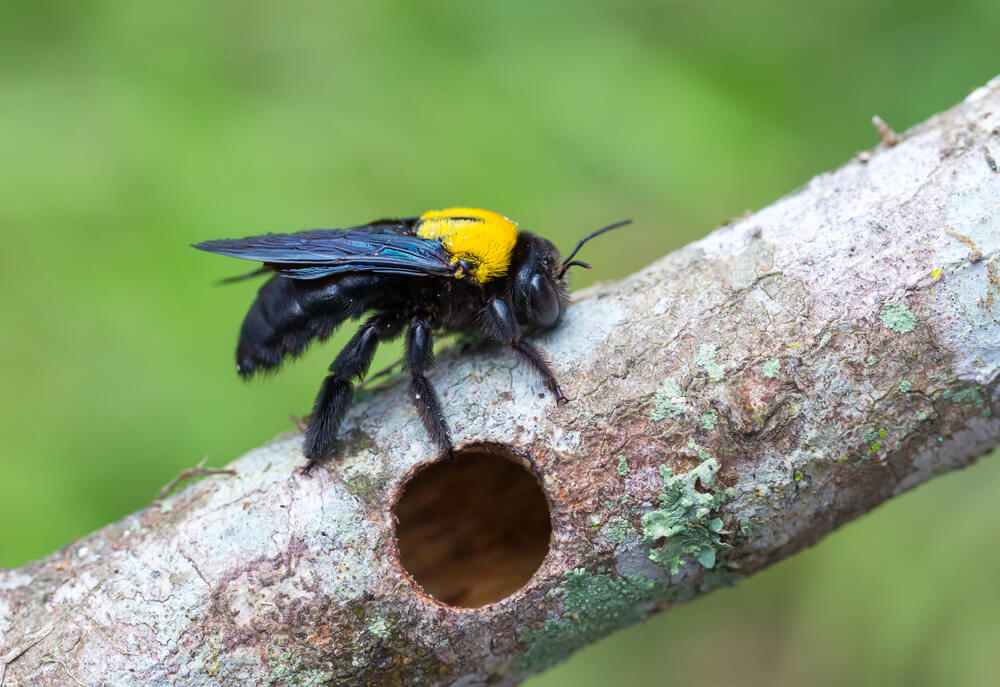
Carpenter bees are a large, black and yellowish-orange species of bee that are active from the early spring through the early fall. Carpenter bees are significantly larger than honey bees and are often mistaken for bumblebees due to their similar size and appearance. These bees like making their nests in wooden structures like houses, causing thousands of dollars worth of damage. In this article, we’ll talk about how you can identify carpenter bees, how they can damage your home, and how you can keep an eye out for them! If you have any questions about carpenter bees or are a Massachusetts resident that would like a free estimate on a carpenter bee control service, please contact our team at Absolut Pest Control today by calling us at (978) 388-4589!
Carpenter Bee Identification
As mentioned above, carpenter bees are relatively large bees that are often mistaken for bumblebees due to their size and appearance. Carpenter bees can be easily differentiated from bumblebees because they have shiny, non-hairy abdomens, while bumblebees have a dense layer of fur that covers almost all of their bodies. Another way to identify carpenter bees is by paying attention to their behavior. Carpenter bees will often hover around the exterior of homes and land on untreated wood, where they like to create holes and tunnels where they can lay their eggs.
How Carpenter Bees Can Damage Your Home
Carpenter bees that survive the winter here in Massachusetts will emerge from hibernation in the spring and begin to mate. Fertilized female carpenter bees will then immediately look to build their nests where they can safely lay their eggs, and oftentimes, they choose to dig their nests in your house’s siding, deck, roof, or other wooden structures. Carpenter bees prefer to excavate their nests in unpainted, untreated softwoods. When your home is repeatedly targeted by carpenter bees, its structural integrity can be damaged and cost you thousands of dollars in repairs, similar to the damage that termites and carpenter ants can cause.
Signs Of A Carpenter Bee Infestation
The easiest way to spot a carpenter bee infestation is to keep a lookout for the damage they cause on the wooden surfaces on and around your home. Carpenter bee damage looks like round, smooth holes that have a diameter about the size of your pinky finger. Once they have accessed the inside of the wood through these holes, carpenter bees will make a sharp turn where they will continue to burrow parallel to the surface, creating damage that is much larger than it may appear to the naked eye. In order to prevent harmful carpenter bee damage, you should regularly inspect the exterior of your home for these smooth, round holes in the spring, summer, and early fall!
Contact Absolut Pest Control!
If you have any questions about identifying, preventing, or treating a carpenter bee infestation in your Massachusetts or Southern New Hampshire home, please contact our team at Absolut Pest Control! We provide various pest removal and extermination services at affordable prices throughout the region! Give us a call today at (978) 388-4589 or fill out the contact form on our website to get a free estimate!
How To Prevent Earwig Infestations In Your Home

Earwigs are a menacing-looking insect due to the large pincers that are located on the back side of their abdomen, but these pests are harmless for the most part. Legend has it that earwigs got their name from the suspicion that they would crawl into people’s ears when they sleep, but this rumor has no scientific basis and is most likely false. Even though earwigs are not particularly harmful, they are still an unsanitary insect that you should aim to keep out of your home or business! In this article, we’ll offer you some tips on how to prevent earwig infestations in your home! If you have any questions about earwigs or would like a free estimate on an insect control service at your Massachusetts or New Hampshire home, please contact our team at Absolut Pest Control today!
Limit Excess Moisture In Your House
Earwigs are attracted to moist, secluded environments, so one of the best ways to prevent infestations in your home is to limit any excess moisture in cabinets, basements, bathrooms, etc. If you’ve noticed earwigs in your home recently, you should perform a thorough inspection for pipe leaks or other sources of moisture that may be attracting these insects.
Seal Gaps & Cracks In Foundation & Walls
Earwigs’ most common entry point into homes is through cracks, gaps, or holes in the walls or foundation of the home. Sealing up these cracks with caulking or liquid cement is an excellent way to prevent earwig infestations, but can also prevent infestations from a wide range of other insects and rodents.
Landscaping Around Your Home
One more way to prevent earwig infestations in your home is to be vigilant about the landscaping in your lawn. As mentioned above, earwigs are attracted to moisture, so removing moisture-filled items from the perimeter of your home can help prevent infestations inside. Be sure to clean up leaf piles, trim back vegetation, and store wood piles at least 10 feet from your house!
Contact Absolut Pest Control!
If you have any questions about preventing earwig infestations or are currently experiencing a pest problem at your Massachusetts or New Hampshire home, please contact our team at Absolut Pest Control! We provide home and business owners in the region with a wide range of affordable pest removal & extermination services! Contact us today to get a free estimate by giving us a call at (978) 388-4589 or by filling out the contact form on our website!
Tips On Pest-Proofing Your Home For The New England Winter
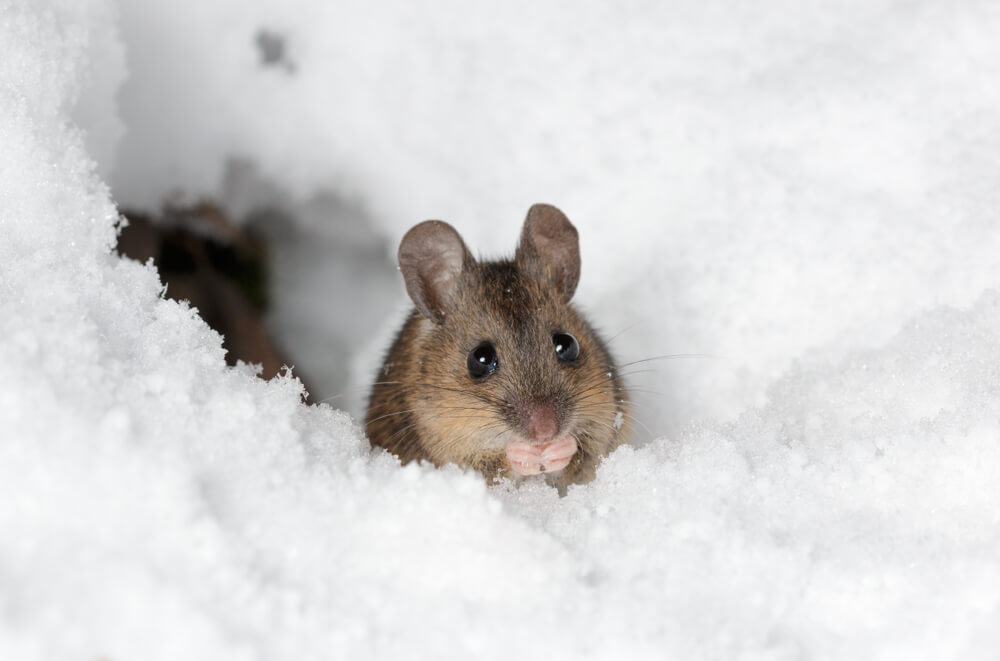
The cold wintertime in New England can drive a wide range of pests into your home that are seeking shelter. Some of the most common winter pests in New England and the surrounding regions are rodents, carpenter ants, cockroaches, stink bugs, ladybugs, bed bugs, earwigs, and more. In this article, we’ll give you some tips on how you can prepare your home for the wintertime in order to prevent pest infestations from rodents, insects, and more! If you have any questions about pest prevention or are currently experiencing a problem with any kind of pest at your northeastern Massachusetts or southern New Hampshire home, please contact our team at Absolut Pest Control today for a free pest control estimate!
Seal Gaps & Cracks Around The Exterior Of Your Home
One of the best ways to prevent rodent and insect infestations in your home during the wintertime is to ensure that these pests can never enter the house in the first place! To do this, you should perform a thorough inspection of your house’s foundation, doors, windows, and siding. If you notice any cracks or gaps anywhere on the exterior of your home, you should be sure to seal them up in order to prevent pests from entering through them. Even if the crack or gap seems insignificant, they should still be sealed, as adult mice can squeeze through spaces that are only about the size of a dime. In order to seal off cracks and gaps, you can use screens, caulking, spray foam, steel wool, and more.
Landscaping Around Your House
Another great way to prevent pest infestations during the wintertime is to keep up with the landscaping around the exterior of your house. You should be sure that any tree branches around your house are trimmed back to at least 10 feet from your roof, as they can act as a bridge for insects and rodents. Additionally, piles of firewood should be placed at least 5 feet from your home’s walls, as pests living in these stacks could otherwise gain easier entry into your house. Finally, be sure to properly deal with the leaves that fall from the trees around your house, as pests often live and hide underneath debris. Rake your yard regularly to keep up with leaves and clean out your gutters!
Properly Dispose Of Garbage
One more way to prevent pest infestations this winter is to be vigilant about the way you store and dispose of your trash. Improper garbage storage is one of the most surefire ways to attract pests to your home, especially during the wintertime when pests’ typical food sources are more scarce. Be sure that your trash and recycling bins have tight fitting lids that are being utilized while the trash is still in your home and while it’s on the curb awaiting pickup, as rodents and small mammals like raccoons may try to break into your trash cans to find an easy meal. You should also be sure to regularly clean your trash cabinets in order to pick up any spills and crumbs that may be attracting ants, mice, and other pests!
Contact Absolut Pest Control!
If you have any questions about preventing pest infestations in the wintertime or are currently experiencing a pest problem at your Massachusetts or New Hampshire home, please contact our team at Absolut Pest Control! We provide home and business owners in the region with a wide range of pest removal & extermination services at affordable prices! Contact us today to get a free estimate by giving us a call at (978) 388-4589 or by filling out the contact form on our website!
What Are Powderpost Beetles?

“Powderpost beetle” is a term that refers to several species of beetles that tunnel through wood, damaging the structural integrity of whatever they are attacking. There are three different families of beetles that can be classified as powderpost beetles: Lyctidae, Bostrichidae, and Anobiidae. Because powderpost beetles are wood damaging insects, they are often mistaken by homeowners for termites or carpenter ants when they begin to attack a house. Without actually being able to see the beetles themselves, the best way to differentiate powderpost beetle infestations from other wood-damaging insects is to look at the damage they’ve caused. Powderpost beetles create narrow, circular tunnels in the wood they are burrowing through, leaving behind a powdery, sawdust-like material. Below, we’ll dive deeper into the three main types of powderpost beetles so that we can help you identify the insects that are damaging your home! If you have any questions about powderpost beetles or are a Massachusetts homeowner that is currently struggling with a wood-damaging insect problem, please contact our team at Absolut Pest Control for a free pest control & extermination estimate!
Lyctid Powderpost Beetles
Lyctid powderpost beetles are typically 1/16-1/4 inch long with reddish-brown bodies. Lyctid powderpost beetles most commonly target newly manufactured products with wood that is less than five years old, and infestations are often caused by wood that already contained eggs or larvae at the time the product our house was built. Lyctid beetle infestations are especially common in tropical hardwoods, as the storage and drying process for these types of woods prior to their arrival in the USA can attract the insects.
Bostrichid Powderpost Beetles
Bostrichid powderpost beetles range in size from 1/8-1/4 inch long with elongated, cylindrical bodies. While these beetles are similar in color to Lyctid powderpost beetles, they can be differentiated by their downward-facing heads and rough-textured thorax. Bostrichid powderpost beetles target both seasoned softwood and hardwood, and their damage can often be found in unfinished hardwood flooring, furniture, & other wood products with high starch and moisture content.
Anobiid Powderpost Beetles
Anobiid powderpost beetles are the most dangerous family of powderpost beetles that homeowners can face a problem with because they can seriously damage homes by tunneling through beams, joists, and other essential structural elements of houses. These beetles have similar appearances to the other powderpost beetles mentioned above, but their life cycle is significantly longer, sometimes lasting up to ten years. Anobiid powderpost beetle damage can be found in both hardwood and softwood products like subflooring, plywood, paneling, molding, flooring, and furniture.
Contact Absolut Pest Control!
If you have any questions about identifying, preventing, or treating a powderpost beetle infestation in your Massachusetts or Southern New Hampshire home, please contact our team at Absolut Pest Control! We provide various pest removal and extermination services at affordable prices throughout the region! Give us a call today at (978) 388-4589 or fill out the contact form on our website!
What Diseases Do Mice Carry & Spread?
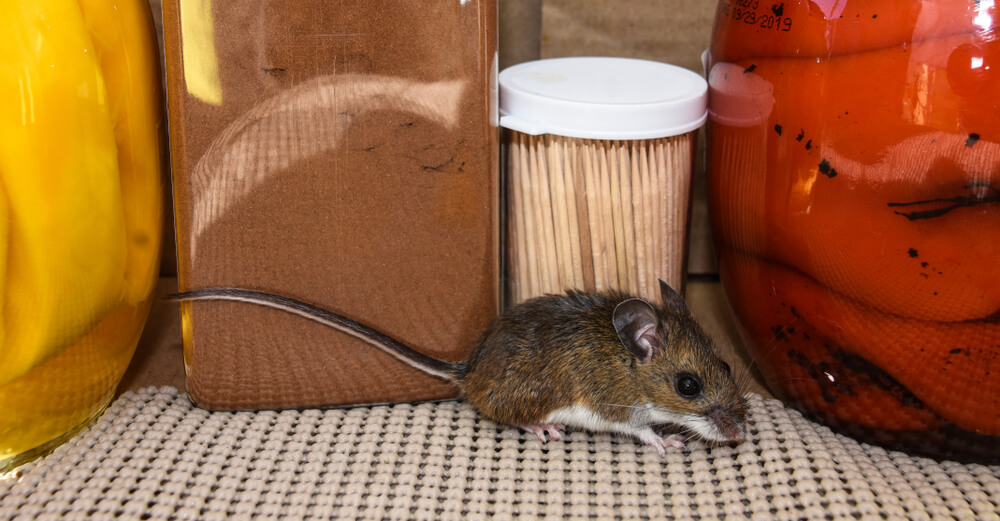
Mice are the most common rodents to enter residences and cause problems for the people that live there, making them a nuisance for homeowners throughout the United States. In addition to property damage that mice can cause by chewing through wood, drywall, wiring, and more, these little rodents can spread a wide range of diseases that can be harmful to you, your family, and your pets! In this article, we’ll talk about some of the diseases that mice carry and can spread to you when they are living in your home! If you are a Massachusetts or New Hampshire homeowner that is currently struggling with a rodent infestation, please contact our team at Absolut Pest Control today for a free extermination estimate!
Hantaviruses
One of the most common types of diseases that mice carry and spread are hantaviruses. Hantaviruses are a family of viruses that are spread primarily by rodents in the US, specifically by deer mice, white-footed mice, cotton rats, and rice rats. Hantaviruses are commonly spread to people when they are in the presence of rodent dropping and urine. Some common symptoms of hantaviruses include headaches, fevers, and muscle pain. If hantaviruses are left untreated, they can lead to other serious health problems.
Salmonellosis
Salmonellosis is a bacterial disease caused by the ingestion of a bacteria called salmonella. While salmonellosis is best known for being caused by eating raw chicken, it can also be caused by eating foods that have been contaminated by rodent feces. When mice get into the food storage in your home, your family is at risk for being exposed to salmonella. Symptoms of salmonellosis include diarrhea, abdominal pain, fever, and other flu-like symptoms.
Leptospirosis
Leptospirosis is a bacterial disease that is spread through the urine of infected animals, like mice. When a mouse that carries the leptospira bacteria urinates in your water or food supply, the disease can be spread to you. Leptospirosis symptoms include fevers, headaches, chills, vomiting, abdominal pains, and more.
Rat Bite Fever
Rat bite fever is a disease caused by consuming food or water that has been contaminated with streptobacillus moniliformis, a bacteria that is carried by mice, rats, and other rodents. As the name would suggest, rat bite fever can also be caused by bites or scratches from rodents that carry the disease. Rat bite fever typically causes a red, bumpy rash on the hands and feet.
Contact Absolut Pest Control
If you have any questions about mice, the diseases they carry, or believe that you have an infestation in your Massachusetts or New Hampshire home, please contact Absolut Pest Control! We provide various pest removal & extermination services at affordable prices throughout the region! Contact us today by giving us a call at (978) 388-4589 or by filling out the contact form on our website!
Bed Bugs Vs. Fleas: Identification, Prevention, & Treatment
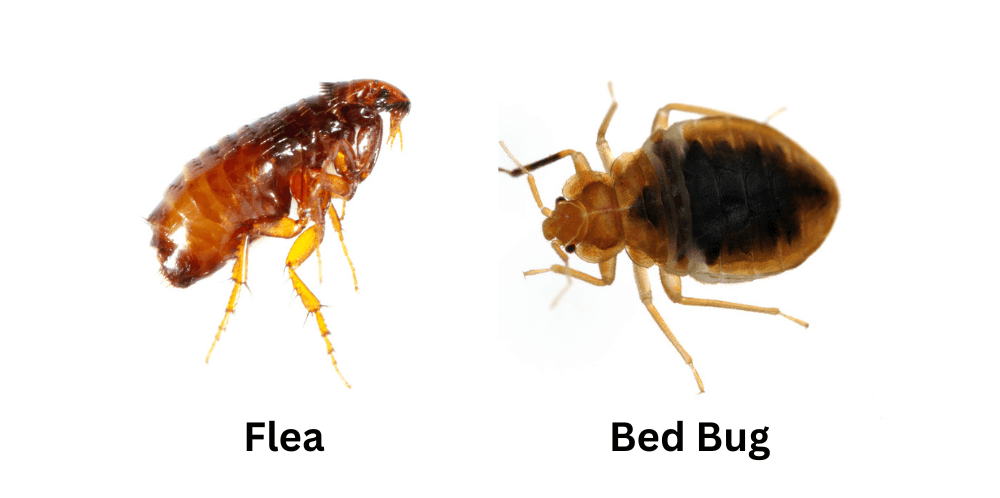
Bed bugs and fleas are both hematophagous insects, meaning they feed on blood, with similar appearances, making them difficult to tell apart for the untrained eye. Both these insects are remarkably fast breeders, so it’s essential to be able to identify an infestation and solve it before the problem gets out of hand! In this article, we’ll offer some tips on how you can differentiate between these two types of blood-sucking insects and treat their infestations! If you’re a home or business owner in Massachusetts or Southern New Hampshire that is currently dealing with a flea or bed bug problem, contact our team at Absolut Pest Control today for a free extermination estimate!
Flea Identification & Treatment
One of the factors that makes differentiating between fleas and bed bugs difficult is that their appearance is so similar. Fleas typically have a more ovular shape than bed bugs with lengths ranging from 1.5mm to 3mm. Fleas have six long legs, which is why they’re so good at jumping, and have a reddish-brown color when they have recently fed. When fleas bite, they leave marks that look like dots with a dark red center. Fleas typically bite your lower body, while bed bugs typically bite your upper body. Fleas are most often found attached to their hosts (humans, animals) or in upholstery, carpets, or pet beds. The best way to prevent flea infestations is to treat your pets with flea medicine, as these insects’ most common entry point into homes is via a ride from pets. As mentioned above, fleas breed & multiply extremely quickly, so it’s important to contact a local pest control company in your area to assist you with eradicating the problem as soon as you spot a potential infestation!
Bed Bug Identification & Treatment
Bed bugs can range in color from tannish-yellow to brownish-red. Bed bugs have a more apple seed shaped body, while fleas are longer and skinnier. Bed bugs are typically around 1.5 mm to 5 mm long, so they are slightly bigger on average than fleas. One key way to differentiate between beds bugs and fleas is to observe one after it has bitten you or your pet. Bed bugs will plump up after sucking blood and turn a bright red color, while fleas will keep their brownish hue. The best way to prevent bed bug infestations is to be extremely cautious with clothes, furniture, and upholstery that you’re bringing into your home, as these are typically the items that bed bugs use to hitch a ride into residences. If you have noticed bed bugs on or around your furniture, you should contact a pest control professional who can solve the problem as soon as possible!
Contact Absolut Pest Control!
If you have any questions about identifying, preventing, or treating a flea or bed bug infestation in your Massachusetts or Southern New Hampshire home, please contact our team at Absolut Pest Control! We provide various pest removal and extermination services at affordable prices throughout the region! Give us a call today at (978) 388-4589 or fill out the contact form on our website!
What Kinds Of Snakes Live In Massachusetts?
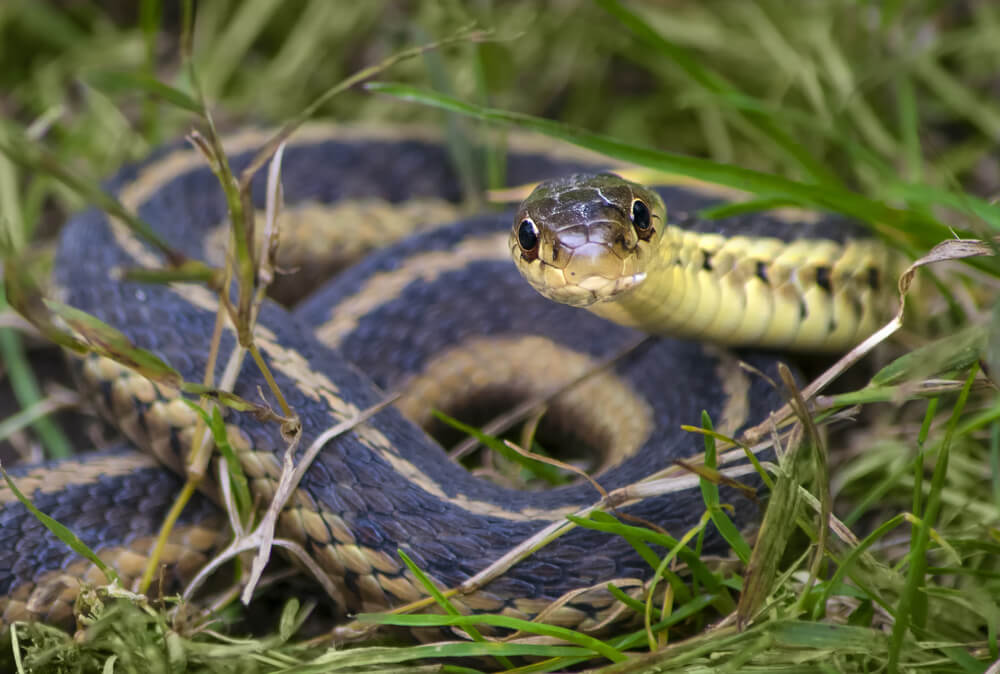
If you’re someone that’s highly afraid of snakes, Massachusetts is one of the best states for you to live in because the Bay State is home to a very small number of snakes, none of which are particularly aggressive. In total, there are 14 different types of snakes that live in Massachusetts, only two of which are venomous. The 14 snakes that can be found in Massachusetts are:
- Common garter snake
- DeKay’s brown snake
- Eastern milk snake
- Northern redbelly snake
- Ring-necked snake
- Black rat snake
- Northern water snake
- Eastern ribbon snake
- Black racer snake
- Eastern hognose snake
- Smooth green snake
- Eastern worm snake
- Timber rattlesnake (venomous)
- Northern copperhead snake (venomous)
Below, we’ll go into detail on some of the snakes that are most commonly found in Massachusetts!
Garter Snakes
There are two types of garter snakes in Massachusetts: the eastern ribbon snake and the common garter snake. The common garter snake is the most common snake in all of New England. These snakes are black or brown with yellow stripes that run down the entire length of their bodies. Garter snakes can be spotted in almost every habitat in Massachusetts: around ponds & streams, in the forest, in fields, and in residential areas. Garter snakes are not venomous and are not harmful to humans.
Brown Snakes
There are two types of brown snakes in Massachusetts: DeKay’s brown snake and the northern redbelly snake. These snakes typically only grow up to about a foot in length and can be identified by their brown bodies with a light brown vertical stripe that runs down their back. Brown snakes are harmless to humans, and their diet primarily consists of earthworms, snails, slugs, salamanders, and beetles.
Eastern Milk Snake
Eastern milk snakes are non-venomous snakes that have a typical length of 24 to 36 inches. These snakes have slender bodies with a gray-colored base covered in red or reddish-brown blotches. These snakes are most commonly found in wooded areas, but they are also sometimes spotted in fields and on farmland.
Timber Rattlesnake
The timber rattlesnake is one of two venomous snakes found in Massachusetts. These snakes hibernate, so they are only active during the late spring, summer, and fall. Timber rattlesnakes are one of the largest snake species in Massachusetts, growing up to five feet long. These snakes are incredibly rare to see, so although they are venomous and can be harmful to humans, you’re extremely unlikely to ever come across one.
Northern Copperhead
The northern copperhead is the only other venomous snake in Massachusetts. These snakes have wide bodies with distinctive hourglass patterns and can be up to 5 feet long. Northern copperheads have red-colored heads, making them easier to identify than many other snake species. Similar to timber rattlesnakes, northern copperheads are relatively rare to see but can be extremely dangerous if you do come into contact with one.
Contact Absolut Pest Control!
If you have any questions about snakes in Massachusetts or are currently dealing with a pest problem in or around your Massachusetts home, contact Absolut Pest Control! We provide various pest removal services at affordable prices throughout the region! Contact us today by giving us a call at (978) 388-4589 or by filling out the contact form on our website!
Ant Control Tips For Summer 2023

Ants are one of the most common household pests in Massachusetts and the United States as a whole. While common black ants do not pose a major threat to you or your home, as they rarely cause damage or transmit diseases, they’re still a nuisance. Carpenter ants, however, can cause serious damage to your home, as they like to burrow into wood to create their nests, which can result in damage to the structure of your home. Regardless of the type of ant you’re dealing with, these little six-legged insects shouldn’t be bothering you this summer! In this article, we’ll offer some tips on how you can prevent ant infestations during the hot summer months here in Massachusetts!
Most Common Types Of Ants In New England
While New England is home to many ant species, there are three types of ants that most commonly cause problems for home and business owners in Massachusetts:
-
- Carpenter Ants: These ants are one of the largest species in North America, usually measuring between 1/4 and 1/2 inch in length. While these ants do not actually eat wood, they do like to create their nests in damp or rotting wood, potentially causing damage to your home.
- Odorous House Ants: These ants get their name from the strong odor they emit when killed. Odorous house ants are quite small when compared to other ant species, as they are usually only about 1/16 to 1/8 of an inch in length. These ants are attracted to sweet foods and are often found in kitchens and other places where food is stored.
- Pavement Ants: These ants get their name from the fact that they are often seen on roads, sidewalks, and driveways. Pavement ants are another small ant species with similar size to odorous house ants. These ants are also attracted to sweet foods and when they get into homes, they are often found searching for food in kitchens and pantries.
Ant Infestation Prevention Tips
The best way to prevent ant infestations this summer is to hire an experienced pest control company who can find and fix vulnerabilities in your home or business, preventing ants from ever entering your premises. There are also some DIY steps you can take to help prevent ant infestations this summer:
- Find and seal off any cracks and holes around your home that ants may be using as an entry point.
- Repair any damaged screens on your doors and windows.
- Store food in airtight containers.
- Frequently sweep and vacuum to pick up any food crumbs that may end up on your floors, countertops, and tables.
- Fix any plumbing issues and water leaks that may be attracting ants.
- Avoid leaving dirty dishes in the sink.
- Don’t leave pet food out for long periods of time.
- Landscape your yard to avoid overgrowth.
Contact Absolut Pest Control For Ant Control Solutions In MA & NH!
If your home or business in Massachusetts or New Hampshire is experiencing an ant problem, Absolut Pest Control is here to help! Our team has years of experience dealing with ants and various other insects, so you can count on us to solve your problem and prevent these pests from coming back! Give us a call today at (978) 388-4589 or fill out the contact form on our website, and we’ll get back to you as soon as possible!
